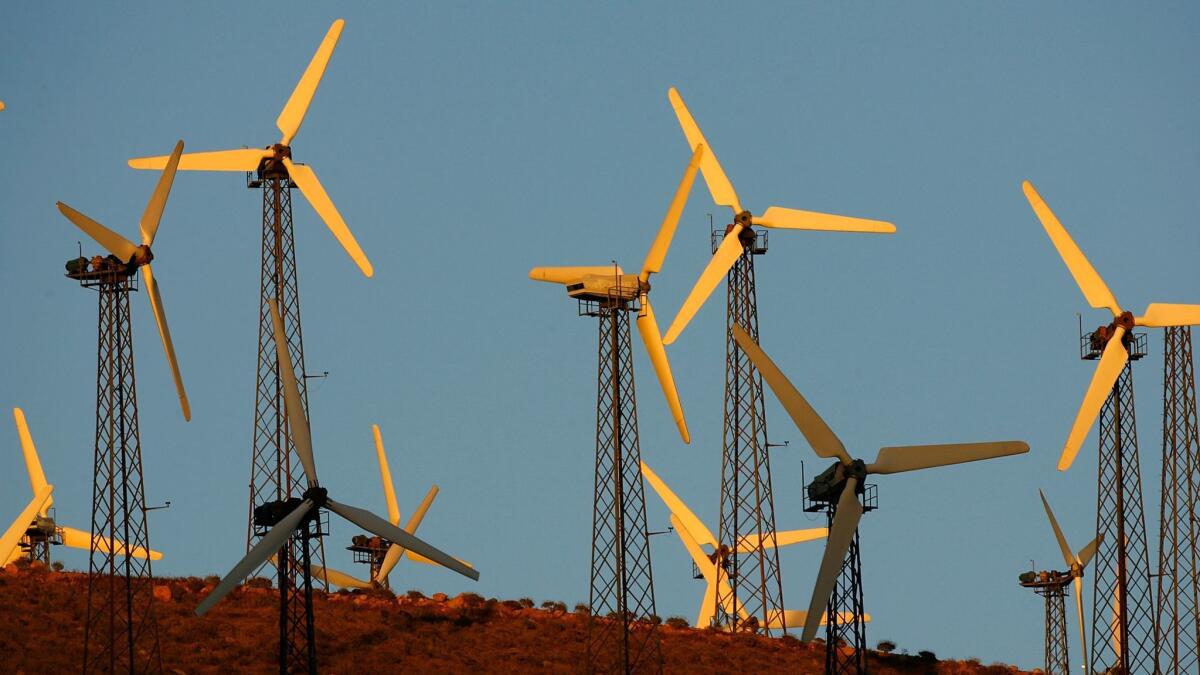Readers React: How 100% renewable energy will use much less of California’s land than fossil fuels

- Share via
To the editor: SB 100 would transition California to 100% zero-carbon, effectively renewable electricity by 2045. Our studies provide a way to do this for all energy, including electricity.
Op-ed article author Robert Bryce, from the Koch family- and Exxon Mobil-funded Manhattan Institute, wrote that our plans would “require wrecking vast onshore and offshore territories with forests of wind turbines and sprawling solar projects.”
This is wrong. The fossil fuel footprint in California is 1.6% of the state’s land area. Our plans would eliminate and replace most of this with a smaller footprint.
Our solar plan footprint is only 39% of the land taken up by fossil fuels. Bryce claims our onshore wind needs 16,000 square miles based on his use of three megawatts generated per square kilometer of land. However, wind land is not “footprint.” It is mostly open space that also can be used for agriculture, rangeland, wildlife or solar; thus, the same land can be used for two energy sources.
Also, to use two random examples, the Ocotillo and Tule wind farms have power densities of 24.3 and 29 megawatts per square kilometer, respectively, not three. Using a conservative estimate of average energy density yields 3,000 square miles of space for wind power, not 16,000. SB 100 will benefit California.
Mark Z. Jacobson, Stanford, Calif.
Mark A. Delucchi, Berkeley
Peter Enevoldsen, Aarhus, Denmark
Jacobson is a Stanford engineering professor and director of the university’s Atmosphere/Energy Program, Delucchi is a research scientist at UC Berkeley’s Institute of Transportation Studies and Enevoldsen is an assistant professor of business development and technology at Aarhus University.
Follow the Opinion section on Twitter @latimesopinion and Facebook
More to Read
A cure for the common opinion
Get thought-provoking perspectives with our weekly newsletter.
You may occasionally receive promotional content from the Los Angeles Times.






